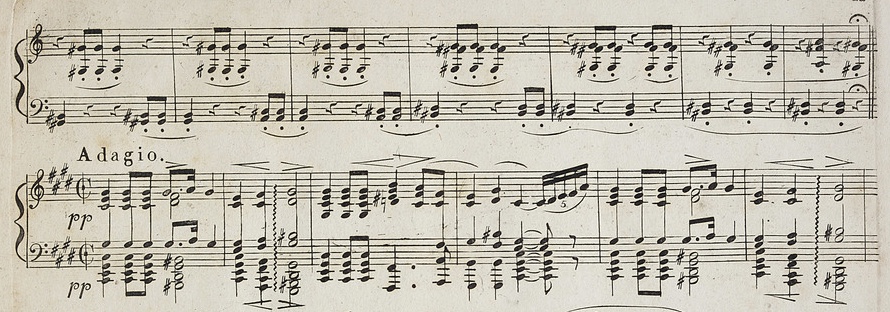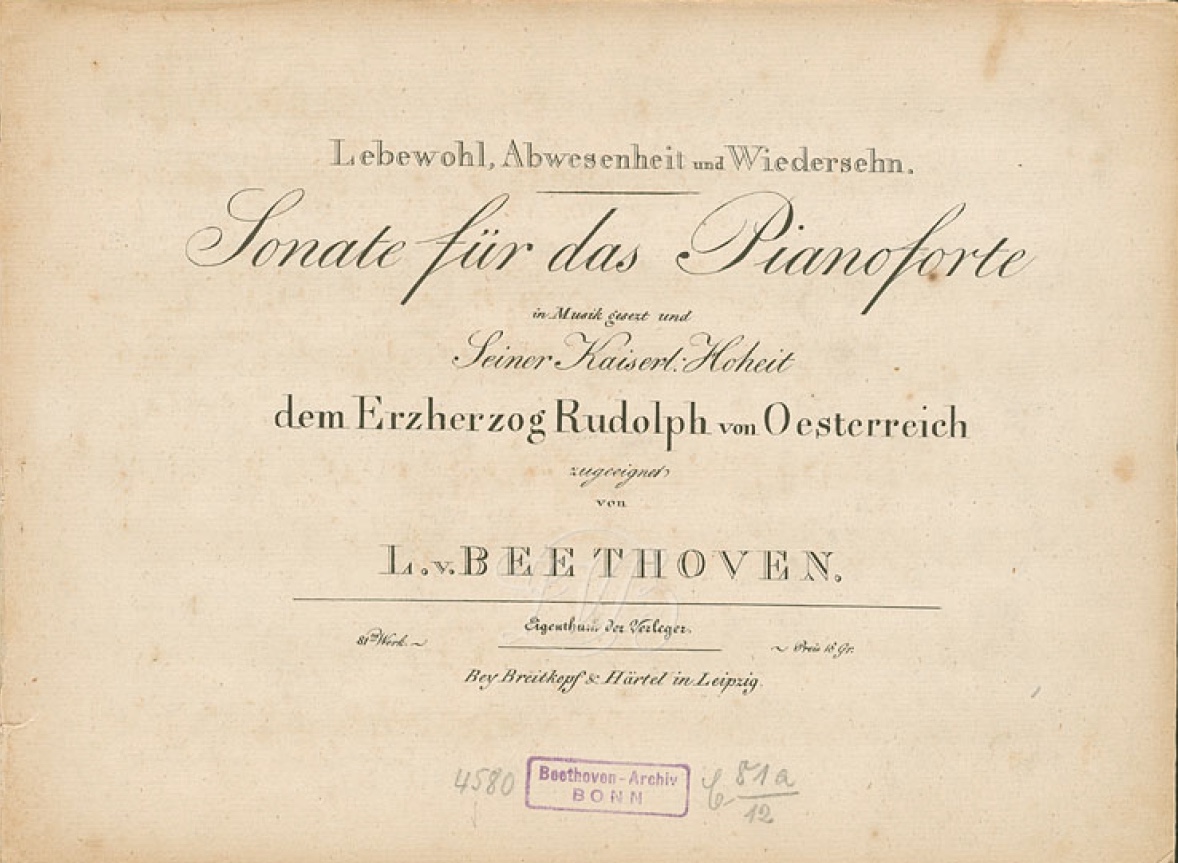Page 1 of 2
Attacca
Posted: 09 Jun 2021, 19:50
by hautbois baryton
Hi folks,
I am finishing a work with three (3) distinct movements played without pause.
What is the preferred notation here - one continuous movement with subtitles at appropriate points, or three movements with with the attacca indication?
Any thoughts?
Re: Attacca
Posted: 09 Jun 2021, 21:26
by John Ruggero
It probably depends on a various factors.
If it is an ensemble piece, it might be easier for rehearsal purposes to have the movements distinctly separated.
If a solo piece, aesthetics might come more into play. For example, if one movement emerges or evolves out of another, you might want to show that by making it one continuous movement. Here is the interesting way in which Beethoven joins the second and third movements of his Sonata op. 81a, all of whose movements have titles:
(incidentally, this way of engraving it was lost in later editions.)

- example.jpeg (98.32 KiB) Viewed 4028 times
On the other hand, Schubert's Wanderer Fantasy, whose movements clearly interconnect without attacca's being used, were engraved like this:

- example 2.jpeg (171.1 KiB) Viewed 4028 times
In Beethoven's Sonata op. 27 no. 2, the first movement ends on one page with an attacca indication. Then the second movement begins on the next page in both the manuscript and first edition.
Re: Attacca
Posted: 10 Jun 2021, 11:53
by Anders Hedelin
An aspect maybe worth considering is the listener's perspective. If you have a number of movements or sections that are clearly separate in character and/or tempo, the listener would most likely perceive them as such regardless of if they were written as separate movements with ending double bar and attacca, or in one continuous 'movement' as in the Schubert example shown by John.
On the other hand, movements/sections of similar character just separated by the word attacca between them, is more likely to be a question of notation than of perception.
It seems that both approaches, 'movements attacca' and 'continuous movement' are still in use so I think you may use what best corresponds with your idea.
Re: Attacca
Posted: 10 Jun 2021, 12:11
by Anders Hedelin
Also placing the titles of new movements/sections anywhere in the staff system is rather unproblematic (even if some engravers, like me, try to put them at the beginning of a staff system when possible). I really like John's Beethoven example - it's both separating and connecting at the same time!
Re: Attacca
Posted: 10 Jun 2021, 15:15
by John Ruggero
I really like that notation too, Anders. Unfortunately only the first movement manuscript has survived for op. 81a, so while it is not a certainty that Beethoven actually wrote it this way, the engravers of the first editions were generally faithful to the manuscript in matters like this. Here is the way I engraved it in my edition:

- op 81a.2-3.jpeg (119.03 KiB) Viewed 4001 times
One has to make compromises because of the modern page orientation. I reversed the German and French movement titles because the other movements give the German first. The engraver of the first edition had a difficult spatial problem that he seems to have solved by reversing the titles.
Incidentally, I think this is one of the most beautiful of the first editions of the Beethoven Sonatas. Here is the title page, which I think shows a very tasteful use of many different fonts:

- op 81a title page.jpeg (252.46 KiB) Viewed 4000 times
Re: Attacca
Posted: 10 Jun 2021, 16:00
by Anders Hedelin
I can see what you mean by compromises because of modern page orientation. Probably your solution is the closest you can get to the beautiful notation of the first edition.
(If you'll excuse a proof-reading comment: isn't there an a too many in 'Zeitmasse'?)
Re: Attacca
Posted: 11 Jun 2021, 14:51
by John Ruggero
The "Zeitmasse" or "Zeitmaasse" is a quandary that maybe a German-speaking reader can clear up.
The original edition uses the former spelling, but several editions, including the Breitkopf Complete Works and Schenker's have the latter. I should probably use the former since it is the original and apparently also the modern form. Unfortunately, the manuscript is not in existence. I had thought that maybe Zeitmaasse was Beethoven's usual spelling known from his letters etc. and that they had corrected the first edition from that. Or there was a mid-19th century spelling reform that is no longer in effect?
Regarding the page orientation: most of the first editions and all the original manuscripts are in landscape format, so it was very tempting to try that in my edition. However, while this worked well for my edition of Bach's Inventions and Sinfonias, it would not be as satisfactory for the Beethoven Sonatas, where I have placed a premium on page turns, since wide pages don't turn as easily.
Op. 106, 110 and 111 all first appeared in modern portrait orientation.
Re: Attacca
Posted: 11 Jun 2021, 18:55
by David Ward
My Peters so called Urtext edition (I'm not sure of the date but it could be 1960s or 70s - 20th century certainly) has Zeitmaße. I look forward to having your new edition some day (soon I hope!).
Re: Attacca
Posted: 12 Jun 2021, 02:24
by John Ruggero
Thanks, David. It's now finished but needs to undergo a bit of beta testing, as with my Chopin Etudes edition, before I actually publish it.
Re: Attacca
Posted: 16 Jun 2021, 10:38
by arnepe
as a German-speaking reader I'd like to give my 2ct regarding Zeitmaasse -
the double "a" indicates a long vowel, like in "martin", to distinguish "maasse" or "maße" (meaning: measurement of time) from "masse" meaning "weight".